For the spring series of posts i am going to concentrate on 2 things namely, continuing with the workshop changes and then getting the Liberty ready for this year’s sailing.
After the recent heavy rain here when we had a lot of debris come down the river i re-thought my winter plan which was to leave WABI”’ on her mooring. The boatyard was already near to full when i spoke to Chris the boss about getting the Liberty either ashore or at the least getting her onto the mud and even then he still had more boats to get ashore. The eventual solution that Chris came up with was to put her back where she used to sit right at the start of the time i have been at the yard and where Chris now keeps his big new workboat. Chris then missed a couple of big tides but then dropped me a line to let me know he had moved the big workboat.
Hopefully, by the time this post goes live i will be back alongside the pontoon and getting on with jobs. Also, if i have kicked the rubbish in the workshop around enough i might even be able to get in there and have space to work.

Today, as i write, i am back from a very wet and cold morning at the yard. Chris left a message to say that the big workboat was on the slip, it actually takes up the whole slip, and that i could get on and move WABI”’. This morning when i got there the tide was so high that i couldn’t even get onto the pontoon to bale out a tender and even then the ebb was flowing well. As you guys will know i haven’t been on the boat or any boat since June last year and i was more than a bit nervous about the combination of knee and back problems i have. By the time i did eventually wade to the pontoon access and then empty the yard rowing boat the ebb was running even faster and pinned me on the end of the pontoon for a while. After that , once i got into the stream i did a very quick ferry glide to pull over to the mooring.
WABI”’ was predictably filthy, green and slick with algae. I had to be ultra careful climbing on board. Because of the length of time i have had to leave her unattended i had no idea if the engine would start. At first i couldn’t even get the priming bulb to lift fuel to the engine but that was because the hose from the tank was loose and clearly air was getting in. I pulled the engine over a few times and then had a go at starting it : amazingly it chugged into life after about a dozen pulls.
Getting alongside the work pontoon was ok as it seems as though i haven’t completely forgotten how to drive and moor a boat in a fast running river. Then, once i got alongside the pontoon i had to alter things because it was set up for the big boat with huge fenders which would have stopped me getting aboard. The pontoon is basically a huge collection of wooden blocks, old yard style, that barely floats because the timber is so saturated….at times it was all but awash. I think it took me about an hour to sort my lines out and the pontoon…..one thing i sadly noted is that the 2 mooring lines i keep tied to the stern rail had gone walkabout :’ borrowed’ on a long term basis is my guess. New mooring lines and new fenders are definitely on the shopping list.
The pontoon is under the debris somewhere : after the heavy rains last year.

The first job was just to open her up and see how bad things were below. Amazingly she wasn’t too nasty below although there is some mildew on the cushions so they all need to come out. In fact i think that all her gear needs to come ashore and so that i can give her a clean through and then i can start the work.
The main job of the day was just a first-pass clean, even that took the rest of the morning in the light rain….nice. I didn’t even bother to take the camera as i would have embarrassed by the state of the boat as she was this morning. Chris’s big work boat just before moving onto the slip.
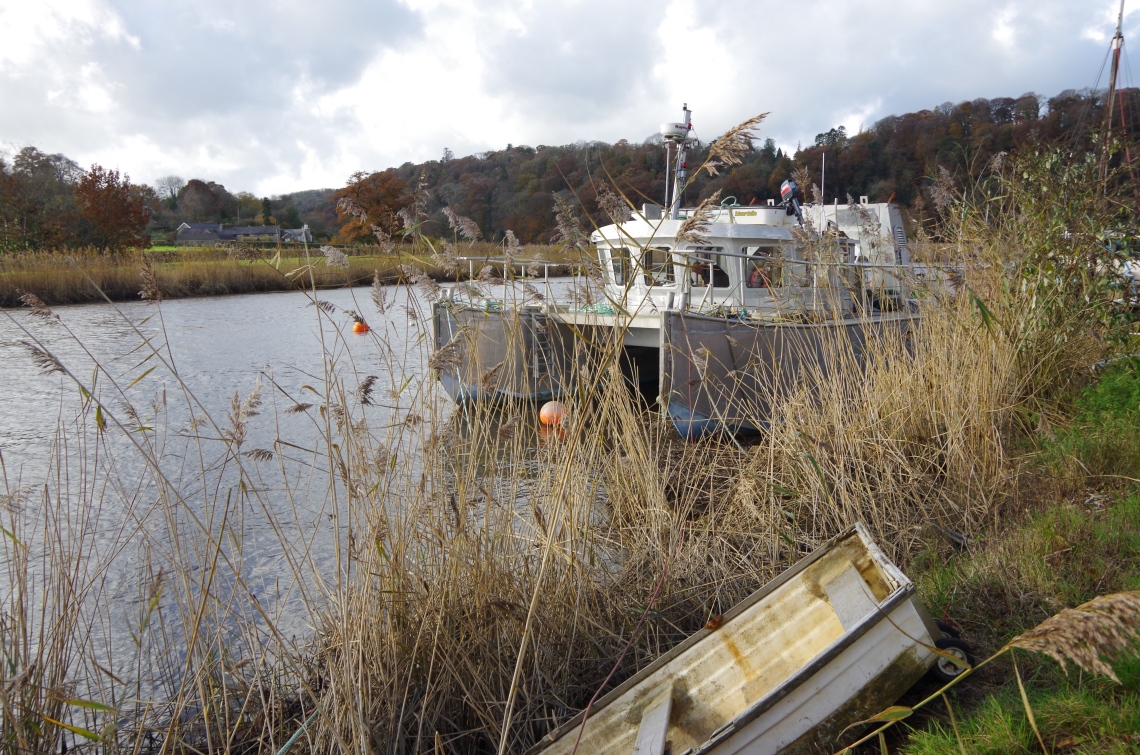
The advantage for me being on the yard pontoon is that i can just about deal with a ladder and getting aboard from the pontoon whereas in December as i started this post i still hadn’t got aboard from a dinghy. In this post where i start to work on the changes and refit it’s important for me to say that one major thing i have to think about is getting on and off the boat and into/out of the cabin and at some future point working on the deck. One major problem i can foresee at this stage is the difficulty of climbing over the guardrail from a dinghy and what i think i am going to do is replace the fixed guardrail wire with dyneema lines on simple over-centre hooks : something along the lines of a pelican hook.
As things were a couple of years ago except that i have an even bigger boat astern now.
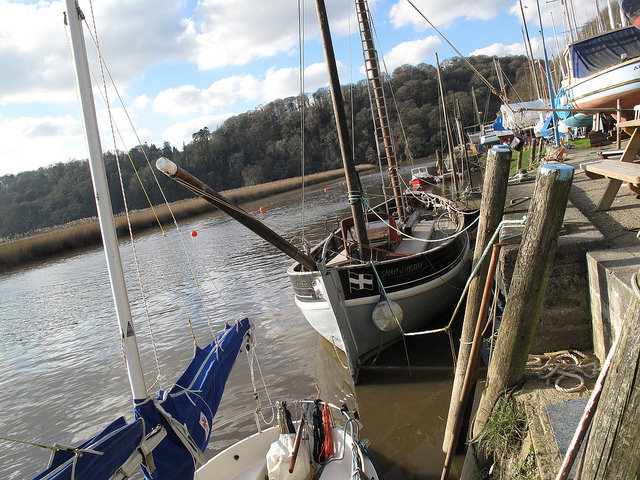
I have 4 or 5 main project posts planned rather than lumping everything together in one long and scrappy post. Each one should improve one aspect of the sailing of the boat or living aboard it. As she is i could just put my gear aboard, stock up with some food and fuel, replace the water and go. However, its December/January as i write i can gain some small benefit from getting through another month or so at work because i can now see how each month’s paycheck can go directly into the refit. Last month’s boat budget got completely blown on the car so i am already a month behind .
As i plan things out i have several refit projects to film and post. This one will be about the cabin heater, the second one will most likely be my experimenting with angled sprits instead of booms for the rig……oh and moving the mizzen stick aft a bit. If the rig experiments work i will most likely have new sails made. Then i’ve got to build a new electrical systems box and re-wire the boat. After that we are thinking about investing in new cushions below and giving the boat a thorough make-over. What else ? working on a way of mounting a sculling sweep and having a second look at a stern deployed anchor.
For this post i am planning and researching a cabin heater for WABI”’ and a month’s pay from my part-time job would almost exactly pay for that project. You could say that my thinking along these lines is “4 months pay = 4 projects”
Two of my previous boats have had solid fuel stoves and i have really enjoyed them except for the one time i nearly got a dose of carbon monoxide poisoning…..which wasn’t funny at all. We think that what happened there was that the stove, a home made vertical design with a top ‘hatch’, could leak carbon monoxide into the cabin when it wasn’t drawing properly. At that time although i liked having the stove for late season cruising my plans with that boat were much more about warm conditions cruising so i took that stove out and replaced it, in a completely equal/opposite way, with an icebox for cold food storage.
Building an in-situ icebox was the hardest woodworking problem job i had ever done at that stage and i learnt a lot from doing it. That little icebox was really succesfull and later became to basis of building a mobile one for Inanda. Inanda of course already had a proper heater although one i hadn’t come across before called a ‘Pansy’ stove which is a small charcoal burner and very effective. A couple of times during my summer delivery voyage it really saved the day when i was wet, cold and fed up after another long day bashing upwind all the way up-channel or when she was wet inside from the rain and heavy spray.
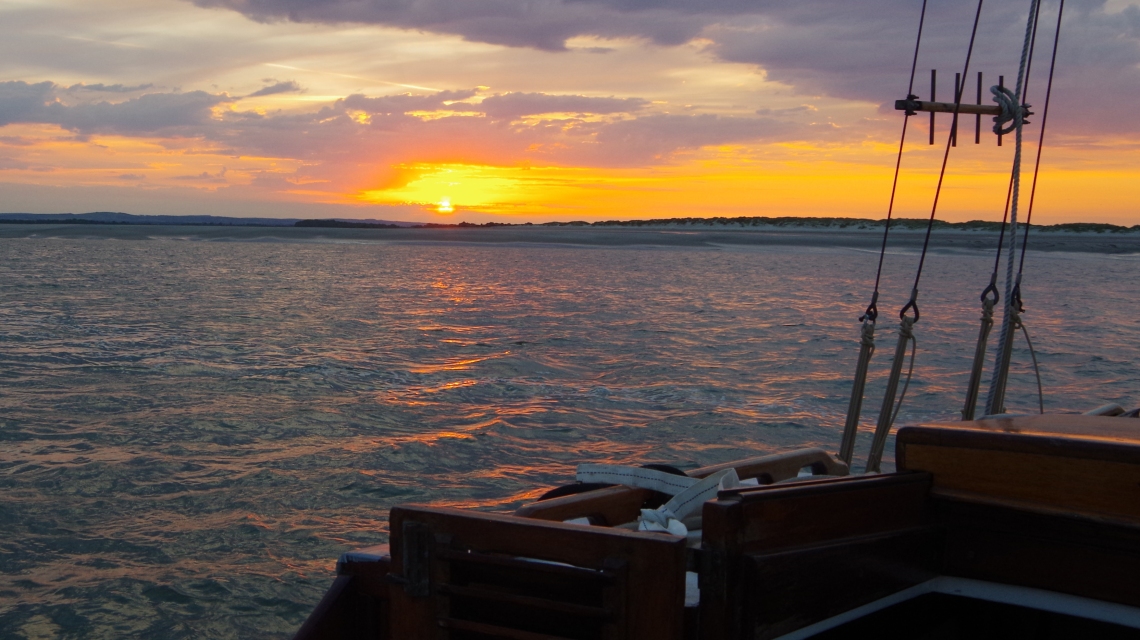
Aboard my Frances 26 (WABI”) at this time of year i could sail to a local anchorage in any weather and half an hour later be at anchor with the gentle heat from the stove warming the boat and the distinctive smell of the burning peat wafting on the breeze. Just to say that both of my last 2 ‘WABI’s’ have come down from Scotland and the first one’s stove was intended to run on a mixture of coal, charcoal, wood and peat : she even came down with some blocks of peat for me to use. When it worked it worked well, when it didn’t it was nearly lethal.
Inanda’s stove was specifically designed for charcoal which is a very efficient and effective fuel for small boats as it takes up much less space than say firewood and is much safer to have on board than say LPG. All that i found i needed to warm and dry Inanda right through was about a third of a load of charcoal…in volume terms about a litre or so and then about half a cup of meths spirit to get it going and i already carried meths for my cooking. In the summer i could pick up a bag of local lumpwood charcoal for about £4 and easily stow 2 bags of that in a space that wasn’t much good for anything else. It doesn’t even seem to matter if charcoal gets a bit wet as it still burns just as well.
For the Liberty then i have been thinking about having a stove/heater for some time and my main considerations have always been firstly, which kind of stove to have and secondly, where to put it in such a small boat. I will jump straight to the car-chase and sex-scene here and say that the solutions seem to be either one of the 2 smallest stoves available and the place to be the main bulkhead but maybe with that bulkhead partially cut out.
Last winter on the Exe…..cold nights and frosty starts.
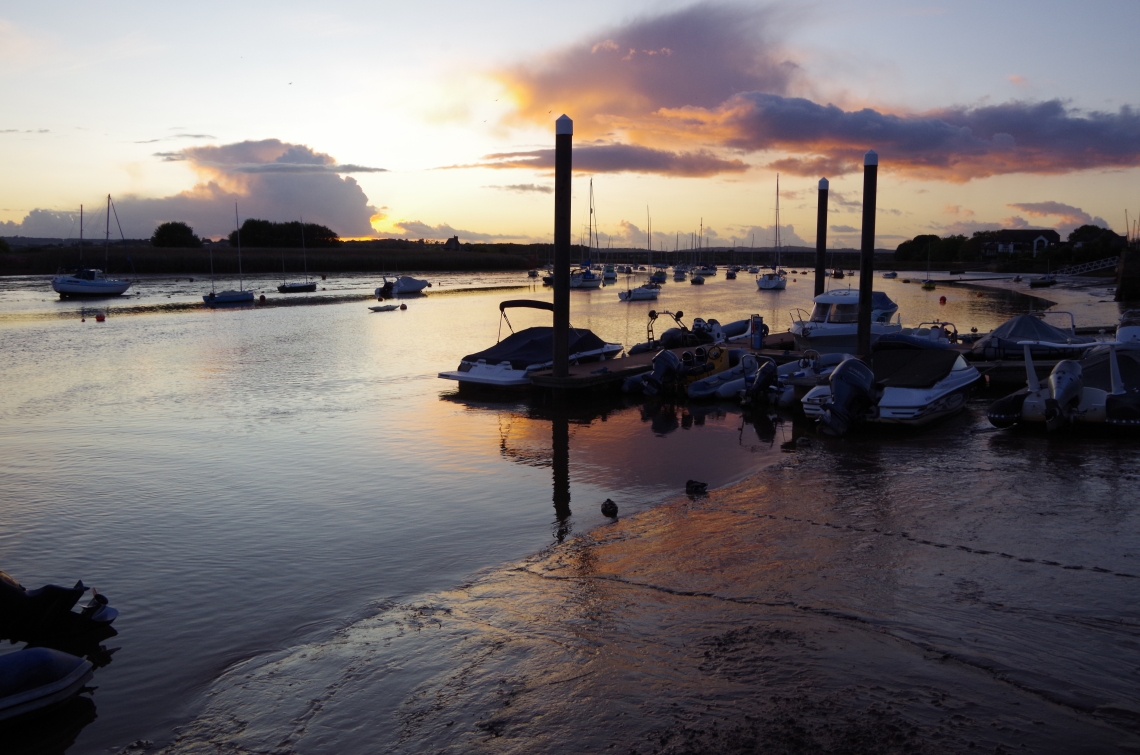
Couple of months back…….December thoughts.
This is the time of year , for me, when maybe the best thing i can be doing is researching and planning my upcoming projects. Today for instance i have finished one project out in the workshop : the multi-purpose cart-thingy ! and it’s too wet to head over to the city for some plywood for the bench so inside + coffee is the best place to be.
Yesterday, as i write, i was talking to my sailing colleague at work…..the only time i can get a sensible conversation there ! and we were talking about this very subject. I had already done my research and come to my own conclusions about heaters. Although i thought i knew which way i would go on this i did also take into consideration the other alternatives and they are mainly choices of fuel and then the secondary problems of fitting those systems into a small boat.
In the past i have been sailed aboard a boat with a simple diesel stove, one of the Icelandic ‘Refleks’ stoves and while excellent they are larger than i can accommodate aboard my boat and neither do i use diesel so they are out. That also excludes the heating systems designed for truckers cabs : basically the Eberspacher and Webasto powered diesel hot air blowers. They are expensive, at least the brand names are, need a fuel that i don’t carry and need electricity to run their blowers. I do have 12v power but not much capacity especially considering that i rely on sunlight for charging however the main consideration is their cost and complexity and the fact that i don’t like them !
WABI”’ just before i moved her.

The main considerations then seem to be that i need a vertically aligned heater that has a small footprint, that can be attached to a bulkhead, that has a small flue and doesn’t rely on any other system, for example electricity.
The practical choices seem to come down to : one charcoal stove, one LPG stove and one pressurised liquid fuel stove. They are, in sequence : the charcoal stove made by Hampshire heaters http://www.hampshireheaters.co.uk/, the propane LPG stove now marketed by Sig marine in the US : http://www.boat-heaters.com/61-sig-marine-cozy-heater-propane-marine-heater.html and finally the pressurised parafin stove made by Taylors in the UK although right now i can’t even find a link to one with prices and specifications.
In terms of specifications and price i will go into much more detail about the charcoal stove as that’s the one i am most likely going to have, the propane SIG stove starts at about $460 in the US but would then have to be shipped to the UK, have VAT added (bastards) and then need an LPG system fitting in the boat. One source i spoke to in the Uk said that the American made LPG stove couldn’t be sold in the UK because it doesn’t have an EU ‘kite’ mark and possibly that some LPG fitters wouldn’t fit one or ‘pass’ one during a gas safety check….that might or might not be the case, i haven’t taken it any further. As it happens i don’t particularly want an LPG tank on the boat because then i would have to build a gas locker or have the gas cylinder sitting exposed in the cockpit and i’m not particularly happy with that arrangement.
LPG propane heater, nice size but a problem to fit the propane system.
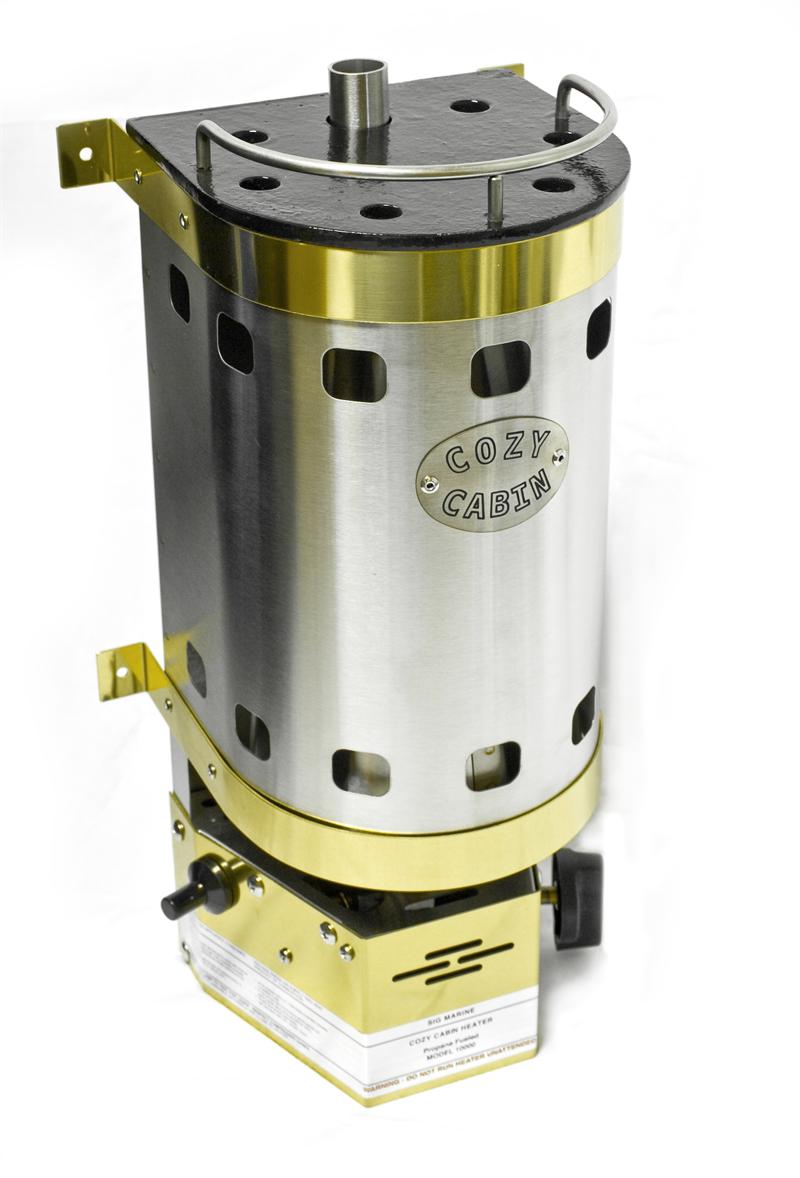
That brings the choice down to solid fuel heaters because i also know that even without a current price to go from i could’t afford whatever Taylors are now charging for their pressurised parafin stove. In terms of solid fuel stoves it then comes down to what fuel to use which is either wood, charcoal or coal. At home we have a traditional woodburner and i collect, dry, process and store several tons of firewood but even a small woodburner would be difficult to fit and needs a wide flue.
Having a woodburner aboard the boat did appeal to my bushcraft-y side as i could then scavenge my own firewood just as i would in the field but it is my experience that these small stoves need very small and dry firewood. I did mess around with carrying very small and well dried chunks of high quality hardwoods as fuel aboard the Frances and it does work but still needs a lot of storage space for the fuel. It’s also a lot of work to collect and process ‘found’ wood that small as it really needs standing deadwood to start with and not the kind of stuff that is regularly found on the river banks here. I do know of very small woodstoves for boats : this is apparently the tiny one aboard Sjogin but the footprint is still larger than i want to have and it still needs a wide flue whereas a charcoal stove can run with a 40mm OD flue.

To explain the mounting position i would like to recount a conversation i had with the late designer’s wife whom i worked with many years ago. I was even then very keen on owning a Liberty but didn’t ever buy one because i was mainly living and working at sea on big boats. When i talked to Trudi Thomas i asked her about the oddly large heads compartment on such a small boat : on the original design the boat has a large heads compartment to port just inside the companionway and that is then closed by the boat’s main bulkhead which supports the centreboard case in the lateral plane.
The centreboard case is only about a foot high though and the bulkhead goes all the way to the deckhead. In the original boats the cabin face of the heads bulkhead is used for the galley. We found the galley arrangement really awkward to use so one of the first things we did was move the galley into the companionway space to stbd and take out the coffin-berth cushion. Now i have a usefully functional galley and a bulkhead that does nothing for most of it’s area. One plan is to simply mount the heater below where the switch panel is now and where the galley used to be.
Cabin face of the heads/main bulkhead and the current position of the switch board.
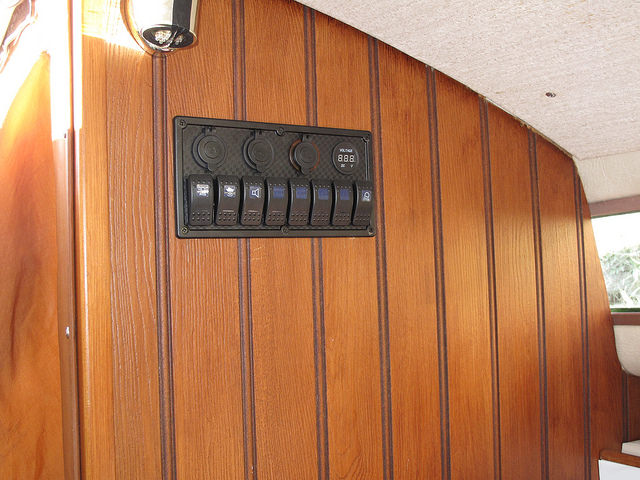
Galley stbd and heads to port.
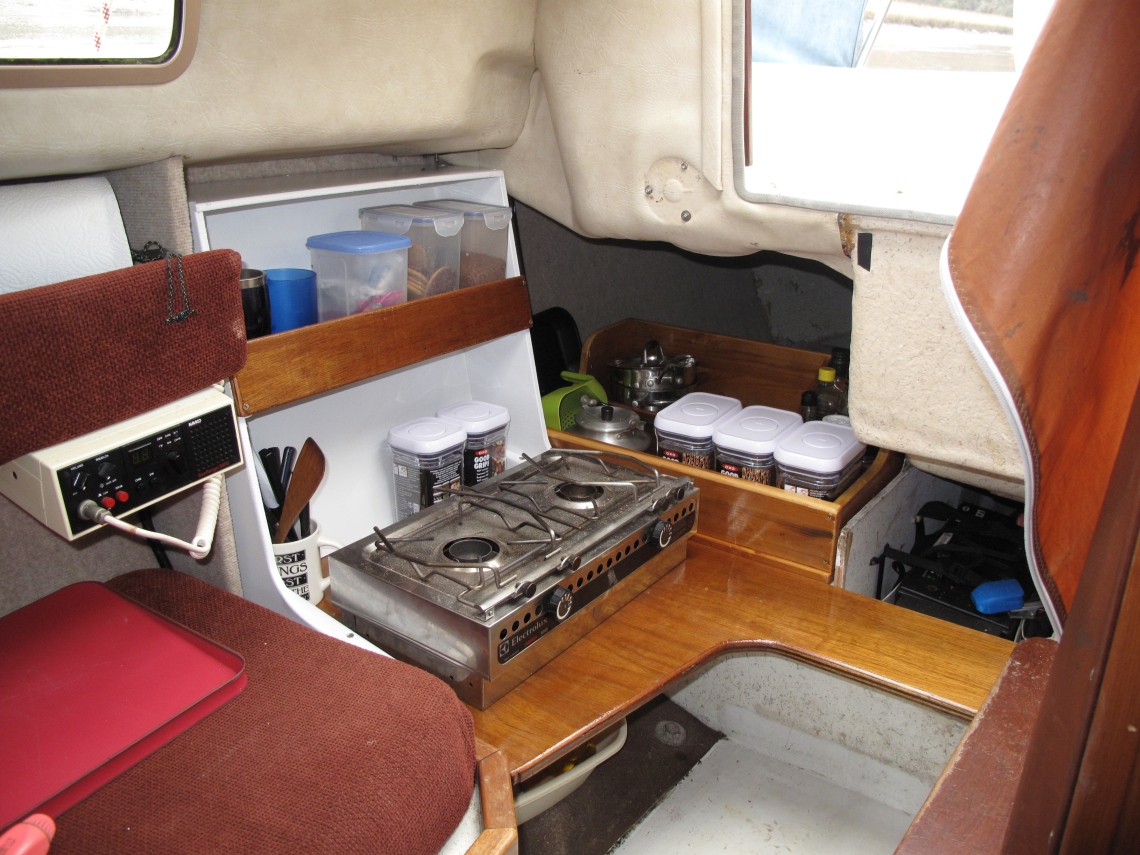
The usual state of the heads compartment when i am working. The heads compartment will be featured in the second refit post as it’s not much use as it is.

In the heads compartment itself i took the sea-toilet out early on as it was still awkward to access : to both step over the centreboard case and duck head under the closure simultaneously….and anyway we both prefer a bucket for heads duty. I did move the boat’s battery switch and main switch panel when i did the re-wire. The current position for the main switch panel is on the cabin face of the heads bulkhead as per the photograph and i will move that back to the cockpit bulkhead as part of this job and the next job which will require me to reinforce the cockpit bulkhead as well*.
My plan ‘A’ is to strip the imitation plank surface of the cabin bulkhead and then cut a lot of that away above the level of the centreboard case but leave a ring-frame effect around the perimeter where it meets the hull side and deck. I will most likely build up the remaining strip of old bulkhead so that it finishes as a more ring-frame like structure. That will be an interesting job to spile out the shape and make the new face pieces in the workshop. Below is an approximate drawing of the new bulkhead : the remaining inboard vertical corner will stay as a compression/support post and grab post. The new stove will then ‘hang’ in that open space where the bulhead was and it’s flue will then exit via the current ventilation ‘mushroom’ in the heads space deck-head.
Plan ‘B’, the original plan, is to leave the bulkhead completely alone and mount the charcoal heater directly to it. I will still have to remove the switch panel as it would be directly behind the hot flue but then the flue should be able to exit via the raised portion of the cabin directly above. That would be a simpler solution and would only be using a space that is essentially ‘dead’…..that was where the galley was originally sited. There are a couple of things that i’m not sure about at this stage with plan B. The main problem is whether there is enough space on the raised moulding section of the cabin roof to take the pad and mounting flange.
I have to report a bit of a blonde/grey moment here…..i’d been thinking about that problem over and over but i knew that i couldn’t solve it until i could take some proper measurements first. I don’t know how many times i must have walked past the ‘other’ Hunter Liberty in the yard and not thought to measure-up off that one as the hull/deck mouldings are identical ! As it is just before i brought WABI”’ alongside the pontoon i had a total ‘doh’ moment and took the required measurements off the other boat so that i could make the deck flange mounting pad and work out that there was, just about, enough space.
In this picture the deck flange and it’s mounting pad have to go just ahead and inboard of the small vent just to the right (camera view) of the hatch.

December.
So, here is what i have ordered (mid December), should be with me by the end of January. This is the small charcoal boat heater from Hampshire Heaters. Right now, in the workshop i am fabricating a close full sized copy in ply and cardboard to use as a working model to work out the positioning in the boat.
http://www.hampshireheaters.co.uk/
And here it is just out of the box : smart eh ?

January……boat alongside and heater dry-fitted. The external chimney is just about apparent in some shots.
The video post, WABI”’ back alongside, halfway clean again and stove installed.
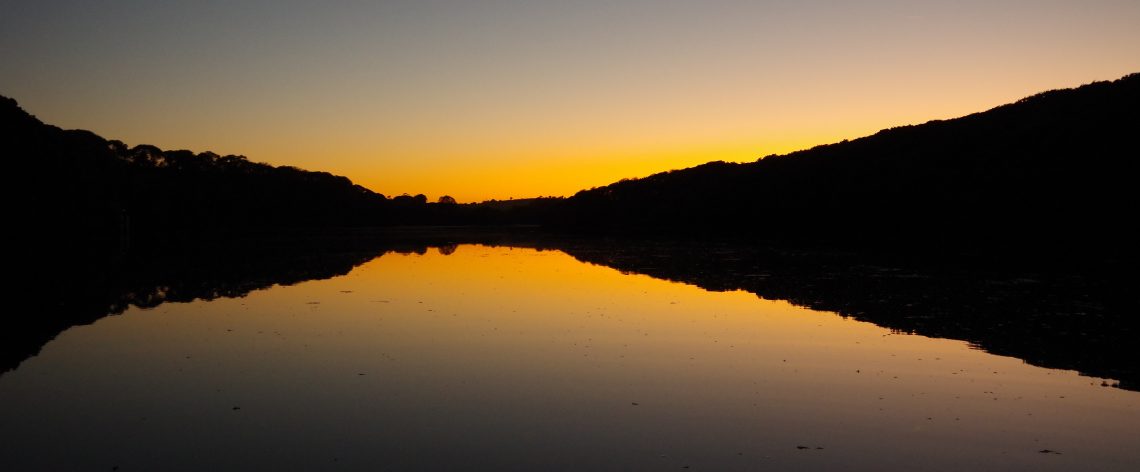


Great stuff Steve, thanks. The future’s bright, the future is…er, charcoal 😉
LikeLike
Interesting that you have the lugger ‘Spirit of Mystery’ moored alongside just up stream of you. Article in March issue of Classic boat if you are interested.
LikeLike
Hopefully, one day, there will be an article in Dirtywetdog……..Chris and Jules have always promised me the look around but iv’e always been waiting to do it on video, inside/outside and sailing.
LikeLike